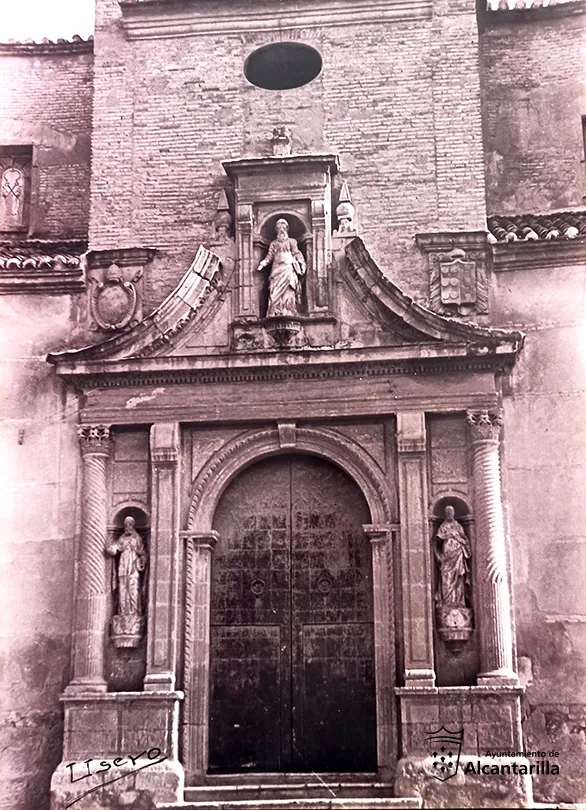
The Puerta de San Sebastián (Gate of San Sebastian) opened onto the Calle Mayor as a second entrance to the church of San Pedro Apóstol, in accordance with the custom of providing churches with two entrances, one main and the other secondary, to allow rapid evacuation in the event of frequent fires, while allowing the rogatory processions to enter the church through one door and leave it through the other.
It is called San Sebastián because, according to tradition, it was located at the entrance to the original chapel of the saint. The hermitage was built under the patronage of the protector of plague epidemics, when the population of Alcantarilla, after the flood of San Lucas in 1545, moved from its original location near the Puente de las Pilas to a higher place, fleeing from the continuous flooding of the river.
The façade was made of carved ashlar, using stone to emphasise and ennoble the entrance to the church, in contrast to the use of brick used in the rest of the construction. It was configured in two sections, raised by a staircase, which bridged the difference in level with the Calle Mayor.
In the lower section, in the manner of a triumphal arch, there was a semicircular arch between pairs of two pilasters and columns, the fluted shafts combining a section of vertical grooves and another in a helical shape, as in the old altarpiece of the high altar from the 17th century, a work attributed to Juan Bautista Estangueta, which was destroyed in 1936. Between the columns were two niches with images of apostles. The second body was presided over by a niche, with the image of Saint Pedro the Apostle, highlighted by a triangular split pediment.
On either side of the pediment were two coats of arms: on the left, a papal coat of arms with a tiara and crossed keys, and on the right, a noble coat of arms.
Although the date of construction and the stonemasonry master who executed this façade are unknown, the architectural and decorative elements it includes allow us to relate it to other outstanding works in the region during the first decades of the 17th century, such as the façade of the church of San Esteban in Murcia.
Until its demolition in 1961 for the construction of the new parish church, the façade of San Sebastián, known as the “small door”, was one of the most important works of Alcantarilla’s artistic heritage.

